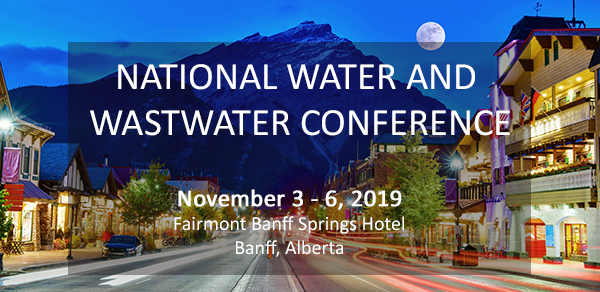 |
||||||||||||||
| Subscribe | Past Issues | www.cwwa.ca | Water Source Magazine | ||||||||||||||
|
CWWA News
If you missed the national conference in Montreal, not only did you miss an awesome event, but you also missed my singing debut. I hadn’t planned on singing. I had my opening presentation all prepared with entrance music to be playing and the lyrics up on the screen. But of course, that’s when all the A/V crashes. No music, no projected slides. Uh-oh. Time to wing it
Federal Initiatives
Federal ‘backstop’ carbon pricing system to apply to nearly half of Canada’s populationOn October 23, 2018, the federal government signalled its intention to move forward with a federal carbon pricing system beginning in 2019. While it was initially meant as a backup plan for the few jurisdictions that did not implement their own carbon pricing mechanisms, amendments to Part 1 of Schedule 1 of the Greenhouse Gas Pollution Pricing Act will make Ontario; New Brunswick; Manitoba; Saskatchewan; Yukon; and Nunavut subject to the Act. The revisions to the Fisheries Act recently passed Third Reading in the House and has been referred to the Senate. The Bill restores previous Fisheries Act provisions related to the protection of fish and fish habitat, adds a requirement for consulting with Indigenous peoples when considering decisions pursuant to the Act, provides additional regulation-making authority and enhances enforcement powers. We’re excited to launch the website for the NWWC2019, we’ll be updating to add hotel reservation information, and the Call for Presentations with a list of potential topics and online submission. While you’re waiting for more information, be sure to mark the date and plan to attend - November 3-6, 2019 in beautiful Banff, Alberta. Provincial News
Quebec signs order to recognize equivalency for WSER The Order removes from the application of federal Wastewater Systems Effluent Regulations (WSER), wastewater systems that would otherwise have been subject to it and that are subject to Quebec’s Environment Quality Act (EQA), and Quebec’s Regulation respecting municipal wastewater treatment works for municipal systems. Access the Gazette Notice at: The Ontario Ministry is proposing to extend the current moratorium on new, or increasing, permits to take groundwater to produce bottled water. The proposal would extend the moratorium for up to one year, to January 1, 2020. The moratorium prohibits: new permits to take water that would authorize water bottling facilities to take groundwater; existing water bottling facilities taking more groundwater than authorized in their existing permits; and new or amended permits that would allow a facility to take groundwater to conduct pumping tests to determine if it could use the groundwater supply as a source of water for bottled water. The moratorium does not apply to water bottling facilities that get their water from a municipal drinking water system. Snippings & Clippings
Water Canada The Ontario government continues to allow raw sewage to overflow into Ontario lakes and rivers at an alarming rate, says a new report by Dianne Saxe, Environmental Commissioner of Ontario. Back to Basics, Saxe’s 2018 Environmental Protection Report, outlines how Ontario’s waters are being poisoned by raw sewage and harmful runoff laden with fertilizer and road salt. Water Online A water management district in Florida had a slithery problem to contend with recently in the form of a 17-foot Burmese python. Water Online The average person in Europe uses 3000 – 5000 litres of water per day, of which the lion''s share is spent on food production — a considerable part on the other side of the globe. The world’s limited water resources are becoming an even more pressing issue as populations grow and climate change causes droughts in the global South and North. While studies have already provided a number of ways to reduce our consumption of water, this valuable information is often left unused. Water Online Water workers in South Carolina recently unearthed a pipe that seemed, by today’s standards, ancient. The 20-inch diameter pipe discovered in Charleston “was made of wood staves held together with metal bands, sort of like a tubular barrel,” the report stated. |
||||||||||||||



